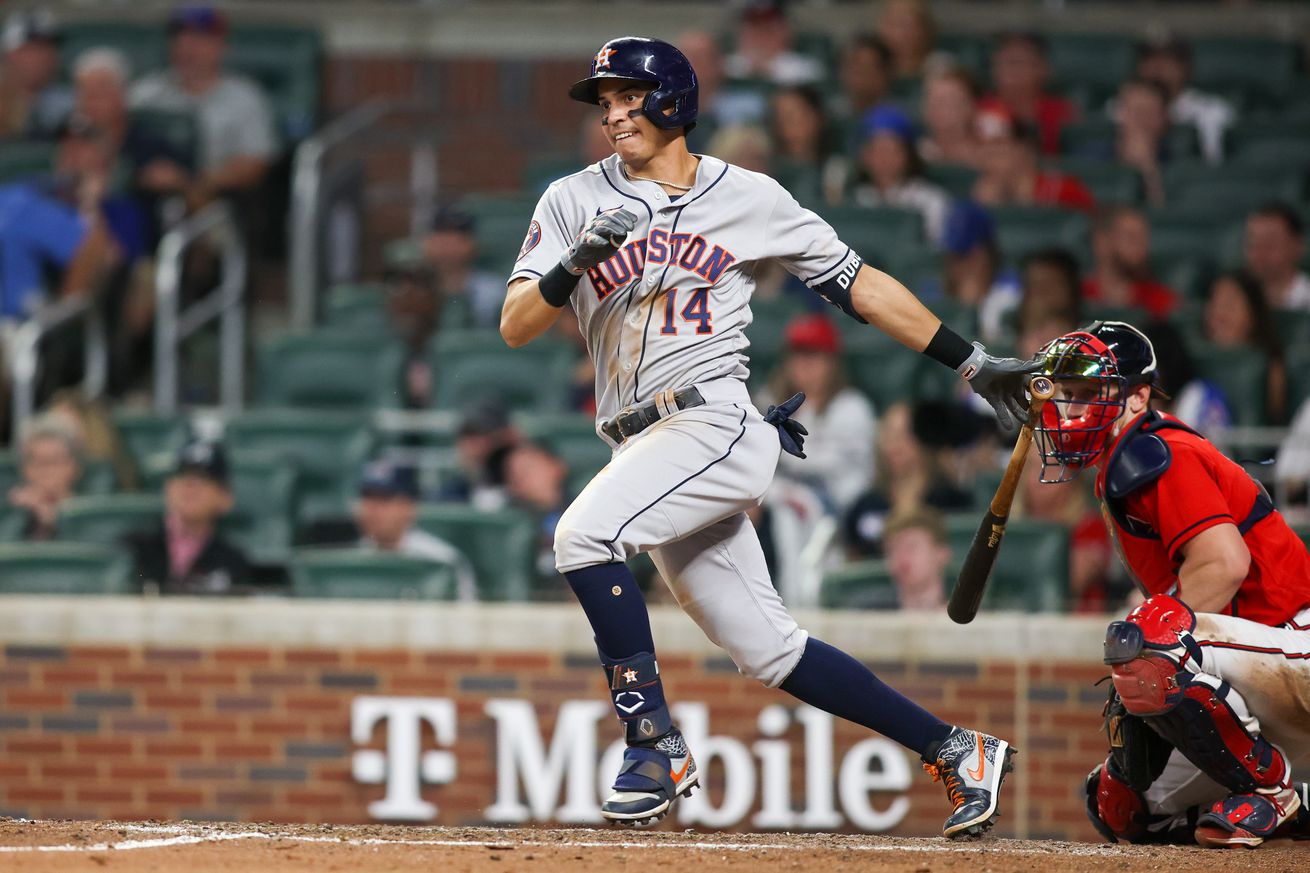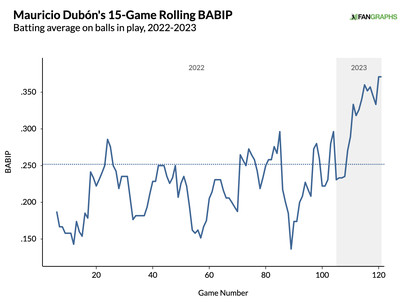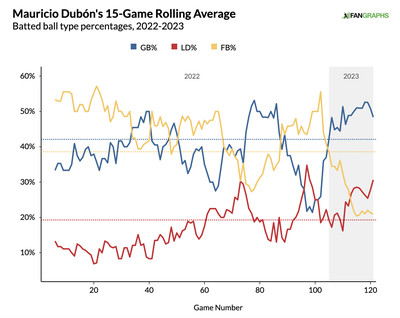
Nearly a calendar year ago, the Astros made what felt like an inconsequential trade involving a swap of minor league catcher Michael Papierski for backup infielder Mauricio Dubón. Not surprisingly the day that the Astros acquired Dubón was also the last game for Niko Goodrum, at least in the majors. No offense to Goodrum, but his performance during his brief time in Houston — .116/.156/.163 with an alarming 51.1% strikeout rate — was a prime reason management felt like a change in mid-May was necessary. While Goodrum was never viewed as anything more than a below-average hitter with solid defensive metrics, a team can’t tolerate even a reserve running a strikeout rate that high.
To sum it up, the Astros essentially swapped one lightweight-hitting backup known for his defense for another lightweight-hitting backup known for his defense. Not a terribly exciting trade, even for a club with little room for improvement outside of the margins. But it was a trade that at least raised the floor of the bench and Dubón, if you squint hard enough, could pass for a league-average hitter, albeit with little power, in spurts. Considering who he is backing up, odds were high that rostering Dubón as your backup infielder and the occasional center fielder isn’t swaying the results too much.
Jose Altuve then encountered Daniel Bard during the World Baseball Classic when the latter’s control was noticeably lacking. One inopportune pitch later and the star second baseman is out through at least the middle of May with a broken right thumb. Cue Dubón, who was half of a presumed platoon at second base with David Hensley to open the season. But this is no longer a platoon considering how Dubón has swung the bat to start the season. And not for home run power. Heavens, no, at least not anymore. Rather, Dubón has done something that arguably fits his profile best: Putting the ball in play.

As detailed by Chander Rome of The Athletic last week, Dubón’s improvement this season stems from conversations with Yordan Alvarez, which prompted a change in the former’s mindset at the plate. In short, Dubón’s approach last season was about him trying to hit for power. It doesn’t take long when you watch the 28-year-old at the plate to realize that it isn’t an optimal approach. The numbers — a career .116 ISO and 18 home runs through five major league seasons — back this assertion.
But with Alvarez’s advice, Dubón has been able to become a more effective hitter by doing what fits his profile best. Below are his 15-game rolling averages for ground balls, line drives, and fly balls. It wasn’t an accident that Dubón’s offensive output improved when his fly ball rate dropped while his ground ball and line drive rates increased, which is something more akin to a bygone era of the game.

However, Dubón’s offensive upside remains limited, even with this new approach. While amid a 17-game hitting streak, he only has a 108 wRC+ — translation: 8% higher than league average offense — on the season. As mentioned earlier, the power output is virtually none existent. While strikeouts are down, Dubón’s 2.7% walk rate qualifies as one of the lowest in baseball. If he doesn’t put the ball in play, Dubón’s contributions to the lineup are minimized. But a league-average to slightly above-average bat based primarily on contact with usually reliable defense is still valuable, especially in a situation when a star second baseman is out for multiple weeks.
That said, it is important to keep Dubón’s situation in the proper context, which means he won’t be a regular once Altuve returns. But he has likely usurped Hensley as the first option off the bench moving forward, either in the infield or the outfield. Regardless of his long-term role, Dubón’s improvement at the plate further strengthens a bench that was questionable to start the season.